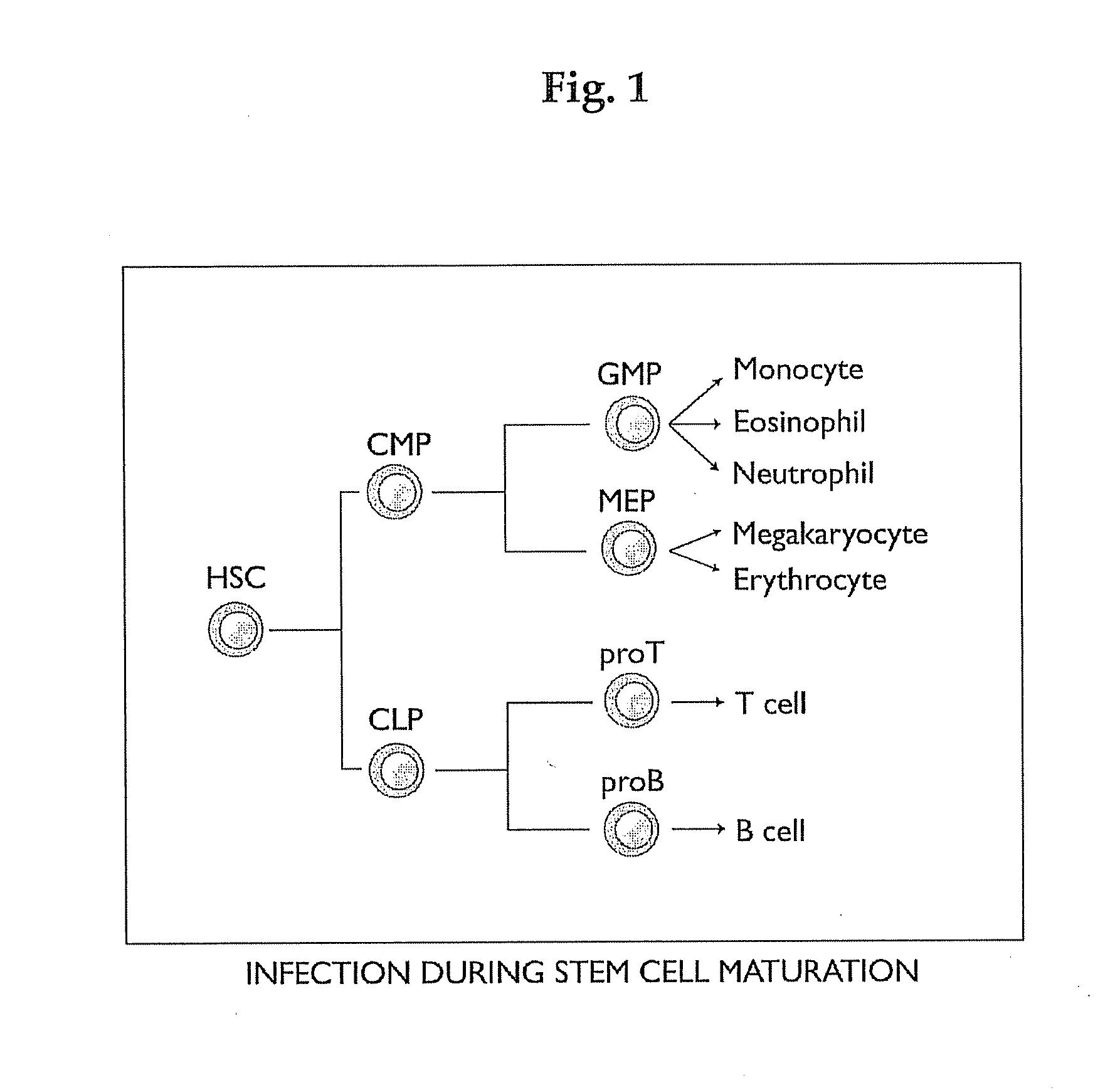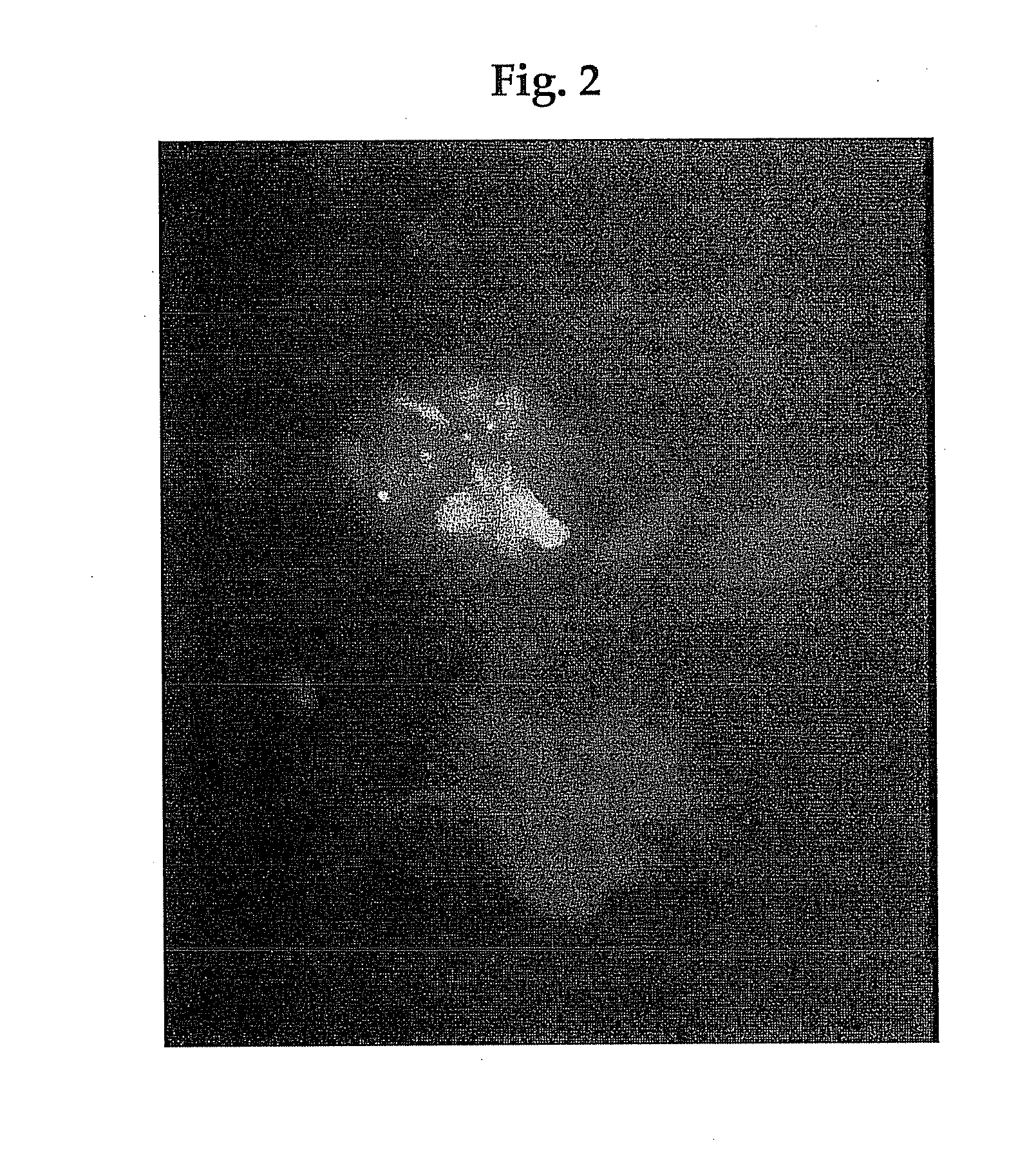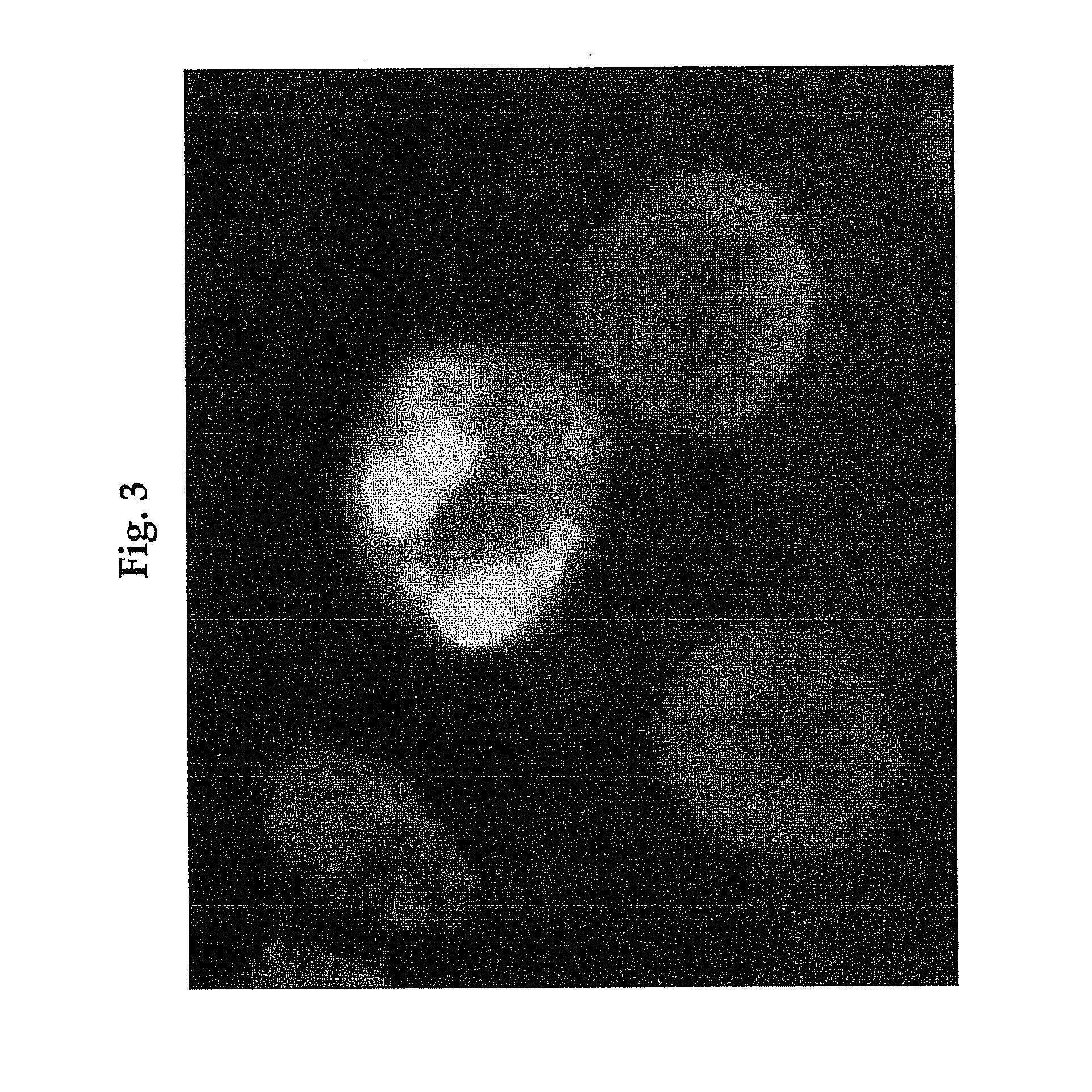Anaplasma FAMILY MEMBERS CAUSE A NUMBER OF BLOOD-BORNE DISEASES
a technology of anaplasma and blood-borne diseases, applied in the gene field of organisms, can solve the problems of compromising the function of key immune system components, failing to follow its programming, and force errors in the transcription of proliferating cells
- Summary
- Abstract
- Description
- Claims
- Application Information
AI Technical Summary
Benefits of technology
Problems solved by technology
Method used
Image
Examples
example 1
Preparation of Ehrlichia-Infected Cells
[0083]Following the teachings of Dumler et al., U.S. Pat. No. 5,955,359, Ap group granulocytic Anaplasma such as Anaplasma equi obtained from infected horses or the human granulocytic Anaplasma obtained from human patients with human granulocytic Anaplasmosis can be grown in promyelocyte cell cultures. Thus, Ap group granulocytic Anaplasmae, such as A. equi or the human granulocytic Anaplasma, are incubated with promyelocyte cell line cultures, preferably HL60 or KG-1 cell cultures. The A. equi and human granulocytic Anaplasma inoculum can be obtained from horses after experimental inoculation with thawed, A. equi- or human granulocytic Anaplasma-infected blood from an acutely infected horse, followed by venipuncture and removal of fresh, infected blood at a time when Anaplasmae are visible in the peripheral blood leukocytes of the ill, infected horse. Alternately, the human granulocytic Anaplasma inoculum can be obtained from human patients du...
example 2
Illustrative PCR
[0102]The identity of A. equi is confirmed using a DNA oligonucleotide primers SLE1-F (SEQ ID NO:1); and SLE1-R (SEQ ID NO:2), by a standard PCR. The antigenic identity of the A. equi in IDE8 tick cultures is also confirmed by an immunocytology using polyclonal horse anti-A. equi and polyclonal human anti-human granulocytic ehrlichiosis agent antibodies.
[0103]PCR using infected tick cell culture extract as a template confirms the identity of the A. equi growing in IDE8 cells. A crude lysate is made according to rapid sample preparation for PCR [Higuchi, In: PCR Technology, Principles and Applications for DNA Amplification, H. A. Ehrlich, Ed. Stockton Press, New York, Chapter 4 (1989)].
[0104]Briefly, infected tick cells from one culture are forced about 10 times through a 27 gauge needle, and large debris removed by centrifugation at 100×g. The supernatant fluid containing small particles and Anaplasmae are collected by centrifugation at 10,000×.g for 20 minutes, and ...
example 3
Bladder Cancer PCR
[0107]A 52 year old male patient presented with a stage iv bladder cancer. Three tubes of blood were obtained-2 with citrate (run in duplicate lanes 2 / 3, 4 / 5) and one without anticoagulant (lanes 6 / 7). Plasmid controls, run at 3 dilutions are in lanes 8-10 and the negative control was run in lane 11.
[0108]Three rounds of PCR were carried out by Medical Diagnostic Laboratories, L.L.C. of Hamilton, N.J. using their own primers. The resulting amplified nucleic acid was run on a gel as seen in FIG. 4. The results show that there are low level bands that are amplified above and below the expected fragment size.
[0109]Also, the bands that seen in the lanes representing the patient's samples are a little different from the controls based upon the melt curve data obtained following the PCR amplification. It appears as if whatever is amplifying in this patient's blood is slightly different, sequence-wise, from the control sequence, and melts 2 degrees lower. Nonetheless, the...
PUM
 Login to View More
Login to View More Abstract
Description
Claims
Application Information
 Login to View More
Login to View More - R&D
- Intellectual Property
- Life Sciences
- Materials
- Tech Scout
- Unparalleled Data Quality
- Higher Quality Content
- 60% Fewer Hallucinations
Browse by: Latest US Patents, China's latest patents, Technical Efficacy Thesaurus, Application Domain, Technology Topic, Popular Technical Reports.
© 2025 PatSnap. All rights reserved.Legal|Privacy policy|Modern Slavery Act Transparency Statement|Sitemap|About US| Contact US: help@patsnap.com



